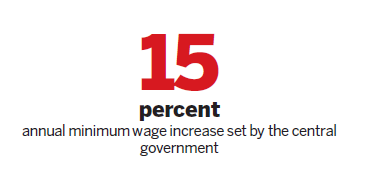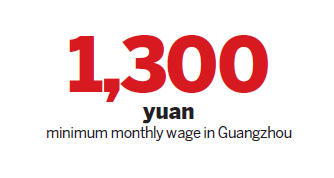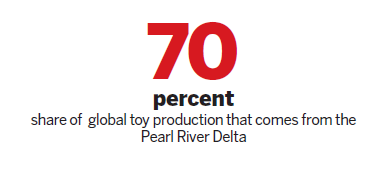Pressure to upgrade products mounts on the Pearl River Delta as returns from low-end manufacturing start drying up, Alexis Hooi and Qiu Quanlin report in Guangzhou.
When Hu Lantian launched her toy bears in Shenzhen seven years ago, she knew her product had to be vastly superior to the millions of other toys being produced in the southern manufacturing hub.
"About 90 percent of the toymakers here are involved in low-cost manufacturing. But we are part of the remaining 10 percent that deal with innovation," said Hu, an executive at Shenzhen PP Bear Industry Investment.
Hu's bears, which interact with children by imitating human expressions, have proved to be a hit with Chinese consumers. One year saw the company bring in more than 20 million yuan ($3.1 million) and it sold up to 300,000 of the bears in 2008 alone, when other toymakers in the area were facing a tough business climate.
US entertainment giant Disney approached her for opportunities to work together but she refused, Hu said. "We knew we had to create a niche for ourselves and have a brand of our own if we wanted to stay competitive and be higher up on the value chain."
Her company holds more than 20 patents, including a crucial one for the microchip that controls her bears' actions. Hu employs about 20 people to design, research and market her bears, outsourcing production to factories in the region.
|
 |
"We are 'created in China', not just 'made in China'. It's a matter of using your brain and not just relying on manual labor," she said.
A list of challenges
Hu is an example of what authorities and businesses are offering to solve the problems facing Guangdong province's Pearl River Delta region. The delta became an engine of China's economic growth over three decades through its low-cost, labor-intensive and export-oriented manufacturing in industries such as textile, toys, electronics and plastics. Industry figures show that, including Hong Kong players, the region's toymakers account for more than 70 percent of global toy production.
Shenzhen, which borders Hong Kong, became a special economic zone following the country's reform and opening-up in the late 1970s. Guangdong's data are impressive: 104 million people; exports that account for more than a quarter of national total trade volume; growth in gross domestic product exceeding 10 percent a year for three decades; $21 billion in foreign direct investment last year, one-fifth of the total for China.
But the factors behind that economic success have also fueled concerns that the Pearl River Delta needs to upgrade to survive the next stage of development.
Industries in the coastal region are facing challenges that include the rising costs of labor and raw materials, a shortage of workers, calls for better worker welfare and benefits, industrial impact on the environment, a shift of focus to domestic consumption to avoid an overdependence on exports and exposure to the vagaries of the global market, and policies to move growth from the coast to poorer inland areas.
Analysts and businesses say that many of the delta's economic changes must be considered together with the country's 12th Five-Year Plan (2011-2015), a central economic blueprint that trickles down to the provincial and local levels. What happens in the prosperous province is often also a bellwether for other areas nationwide.
According to the central government's plan, new strategic and high-tech industries should be developed and supported by policies to wean the economy away from previous production models. The focus should also be on developing products and brands with international stature.
To that end, Guangdong's authorities have set specific targets in their own five-year plan. These include increased expenditure on research and development for science and technology, a 36 percent increase in patent filings and expansion of high-tech manufacturing. Industries targeted for growth include information technology, biomedicine, new energy, LED and new materials.
Provincial capital Guangzhou as well as Shenzhen, Zhuhai and Dongguan have also been earmarked to set aside sites for national high-tech industrial bases.
|
 |
|
 |
 |
